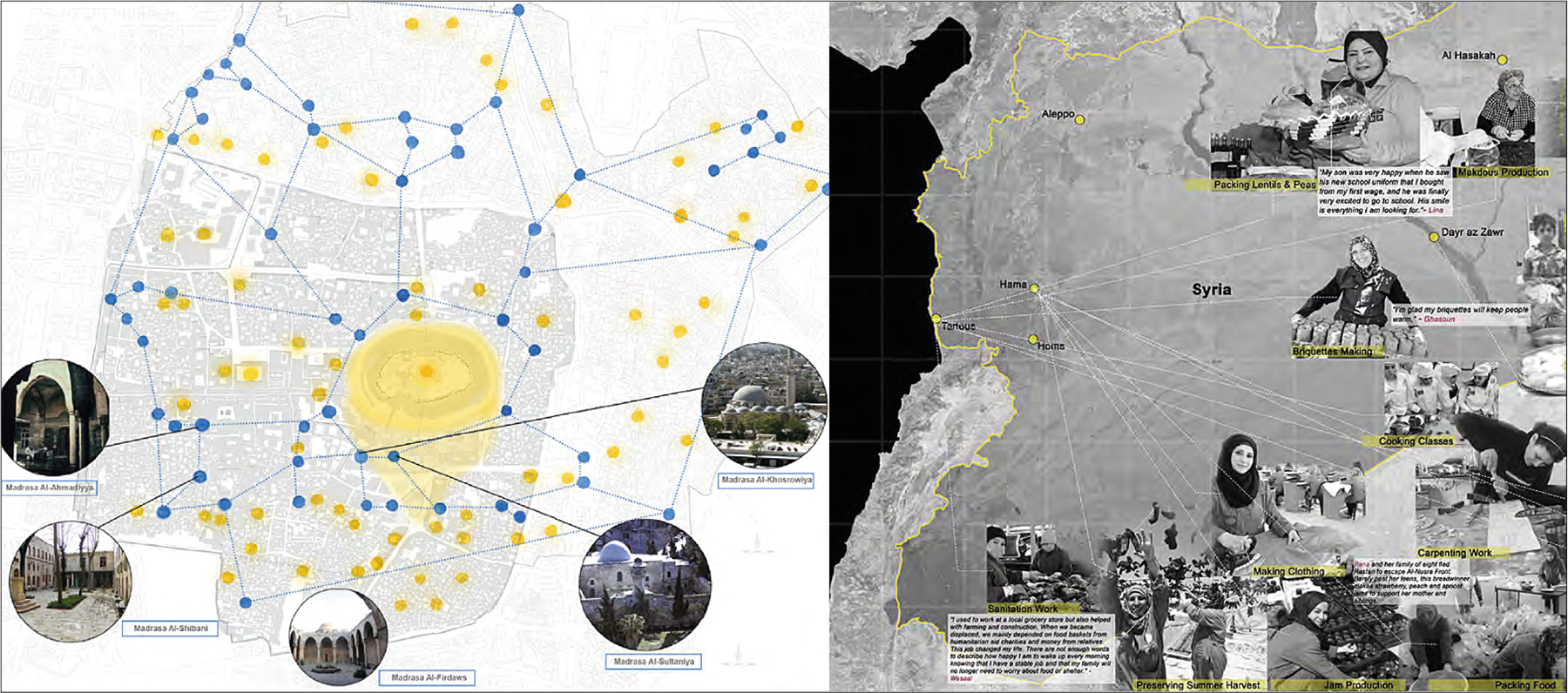Post War Recovery of Cultural Heritage Sites: Aleppo Taht Al-Qalaa

Aleppo Taht Al-Qalaa documents the work of students in the URDS 602 studio offered by the graduate program in urban design at the American University of Beirut in the Spring of 2017-18 under the direction of Howayda Al-Harithy and Jala Makhzoumi. The book features the students' innovative, feasible, concrete spatial strategies for recovery in
Aleppo through the reconstruction and reconfiguration of public space in
post war times, particularly those charged with cultural heritage and
focused in the area of Taht al Qalaa.
About the Studio
The studio on which this book is based investigated the role of urban design in shaping an “integrated social space" within the process of “cultural recovery," thus tackling one of the most challenging design problems of our region today. To that end, the studio took a critical look at the discourse and the approaches to post war reconstruction; from extreme preservationists who argued for the “obligation to make it again possible for future generations to experience historical continuity" to modernists who argued for the reconstruction as an opportunity to subject the city to rational planning. The studio tackled, as well, the role of urban design strategies in the process of recovery using the framework of social and environmental justice. It focused on public space as a generator of the reconstruction process and focused on Aleppo in Syria, where these issues are salient. The intention was to conduct the studio as a professional challenge. Students, faculty members, community representatives, visiting faculty and practicing urban designers and architects brainstormed throughout all phases of the project to contest the class reading, challenge the scenarios that were proposed and critique the articulation of urban design development.

Book Structure
The studio was structured into four phases which constitute basically the four core chapters of the book. The first chapter develops an integrative reading of Aleppo and its outlying region to include historical, spatial, socioeconomic, political, environmental and ecological layers. In the second chapter, the focus narrows down to the space below Aleppo’s citadel, Taht al Qalaa. The layers of the initial reading were collapsed to understand the evolving morphology of the space vis-à-vis changing economic and political narratives from medieval to colonial, nationalist and current times. Mapping and textual representations formed the base for the third chapter on visions for recovery. Interaction with, and feedback from, the representative community was key to testing the multiple visions the students proposed. The community agreed that the Qalaa and historic core underlay the shared identity of Aleppo and that the citadel and adjoining spaces should be restored to their previous imminence. This resulted into the adoption of a shared vision forming the basis for the fourth chapter showcasing urban design conceptualization and development.


